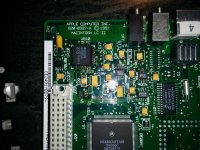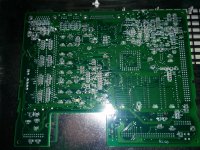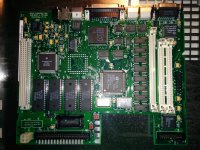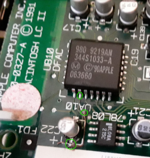I have just recapped the LC II. After a recap, it worked correctly -- it had a steady picture, it chimed and it booted off the SCSI CD-ROM into System 7.5. Then I installed the Asante network card, which was originally installed, and it stopped to chime, but it boots and works correctly. Removing the card did nothing. Also the board was throughly cleaned twice, so there is no cap leak residue.
I discovered that it actually chimes, but extremely quietly, if I put the speaker next to my ear, I can hear a faint chime sound. I also triple checked all my recap work, and found no problems. Also there is very very faint sound on the 3.5mm output.
I believe that the audio amp IC is not working... or perhaps I missed something, any possible guesses?
I discovered that it actually chimes, but extremely quietly, if I put the speaker next to my ear, I can hear a faint chime sound. I also triple checked all my recap work, and found no problems. Also there is very very faint sound on the 3.5mm output.
I believe that the audio amp IC is not working... or perhaps I missed something, any possible guesses?




